Assembly Line Automation: Revolutionizing Modern Manufacturing for Engineers
Explore how assembly line automation integrates robotics, control systems, and smart technologies to boost efficiency, quality, and flexibility in manufacturing!
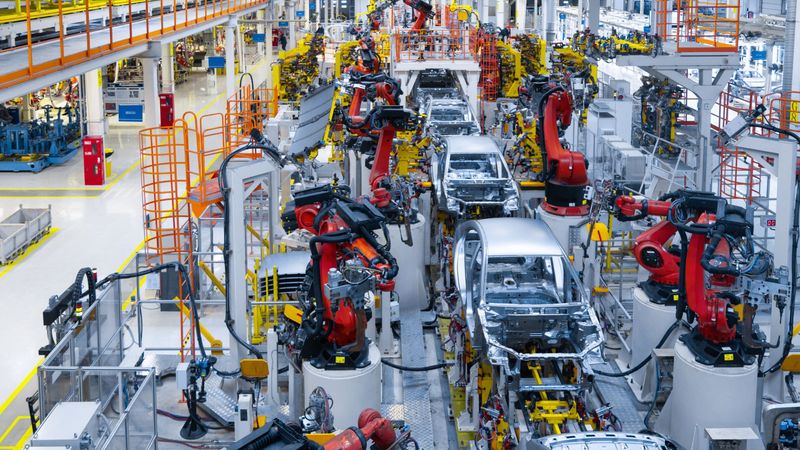
Assembly Line Automation and Production of Cars
Introduction
Assembly line automation refers to the use of technological systems – including robots, control computers, and sensors – to perform assembly tasks with minimal human assistance. This shift has enabled manufacturers to achieve unprecedented levels of speed, precision, and efficiency in production!
For digital design engineers, hardware engineers, and engineering students, understanding assembly line automation is crucial. It blends concepts from mechanical design, electronics, control theory, and computer science. This article provides a high-level technical overview of assembly line automation – from its definition and evolution, to core components and control systems, to implementation considerations and future trends.
Let’s begin by defining assembly line automation, and looking at how it developed over time, along with the benefits it brings to manufacturing!
Understanding Assembly Line Automation
Definition and Historical Evolution
Assembly line automation is the use of mechanized and digital systems to perform assembly tasks traditionally done by people. This can include everything from robotic arms screwing parts together, to automated guided vehicles moving materials, all coordinated by central control software. The goal is to streamline production – making it faster, more efficient, and more consistent than manual assembly.

The concept of the assembly line itself dates back to the early 20th century: in 1913, Henry Ford introduced the moving assembly line for automobile production, drastically reducing assembly time per vehicle. [1] Throughout the mid-20th century, industries refined assembly line techniques with jigs, fixtures, and transfer lines. However, these early lines were mechanized but not yet fully automated – they still required human intervention.
After World War II, with the advent of industrial control systems and computers, true automation began to enter assembly lines. By the 1970s, manufacturing automation had become common in many industries. Companies started using primitive robots and electronic control systems to handle repetitive tasks. This era saw the rise of PLCs and numeric control machines enabling programmable operations. Automation continued advancing in the following decades, especially with the introduction of industrial robots in the late 20th century for tasks like welding and painting.
Today, assembly line automation is a key driver of Industry 4.0, integrating artificial intelligence, machine learning, IoT, and advanced robotics into smart manufacturing ecosystems. Factories now deploy collaborative robots (cobots) that work alongside humans, autonomous mobile robots (AMRs) for flexible material transport, and computer vision systems for defect detection. In 2023, a record 3.5 million industrial robots were operating worldwide, with automation adoption accelerating in sectors like electronics, automotive, and pharmaceuticals.

Emerging trends in Industry 5.0 are focusing on human-robot collaboration, AI-driven predictive maintenance, and sustainable manufacturing processes. With 5G connectivity, edge computing, and blockchain-powered supply chains, modern assembly lines are becoming more autonomous, responsive, and data-driven than ever before.
Recommended Reading: Industrial Process Automation: The Future of Manufacturing
Benefits of Automation in Assembly Lines
Why automate an assembly line? There are compelling benefits driving the adoption of automation solutions:
Higher Productivity & Throughput: Machines can operate faster and longer than humans. Automated lines run 24/7 with minimal downtime, drastically increasing output. They also reduce cycle times per product. For instance, an automated system can perform repetitive motions with high speed and no fatigue, often yielding higher production rates than manual assembly.
Consistency & Quality: Automation ensures each product is assembled with the same process and precision every time, reducing human error. Robots and control systems follow exact instructions, so the quality variance between units drops. This leads to improved product consistency and lower defect rates. Machine Vision systems can also automatically inspect quality, catching defects immediately.
Cost Reduction: Although initial investment is high, in the long run, automation can lower manufacturing costs. Companies save on labor costs for repetitive tasks and often see less waste or rework due to mistakes. Higher throughput also means lower cost per unit. According to industry surveys, manufacturers find that the long-term benefits of automation – like increased productivity and reduced labor expenses – usually outweigh the initial costs.
Improved Safety: Automation can take over dangerous or ergonomically challenging tasks, keeping human workers out of harm. Robots can handle heavy lifting, toxic painting processes, or high-temperature welding, significantly reducing workplace injuries. Workers can be reallocated to monitoring and control roles, improving overall safety on the factory floor.
Flexibility in Production: Modern automation can allow quick changes between product models. This means manufacturers can respond faster to market demands, switching a line to produce a new variant with minimal downtime. Automated systems with reprogrammable controls and modular setups enable a high mix of products without a full line rebuild.
In summary, assembly line automation boosts efficiency, quality, and safety, helping manufacturers stay competitive. However, achieving these benefits requires choosing the right type of automation for the production needs.
Recommended Reading: 6 Types of Automation: A Comprehensive Guide for Engineers
Types of Assembly Line Automation
Not all automation is the same! Engineers classify assembly line automation into three main categories: fixed, programmable, and flexible automation. Each type is suited for different manufacturing scenarios:
Fixed Automation (Hard Automation)
Fixed automation involves highly specialized equipment set up to perform one production task or make a single product at a very high volume. The sequence of operations is fixed — it’s literally built into the machinery and tooling. This type offers fast throughput and low unit cost for large volumes (e.g. millions of identical units), but it is inflexible. Once set, changing the product design or process is extremely difficult and costly. Fixed automation typically has a high initial investment in custom-engineered machines, which is justified by the high output.
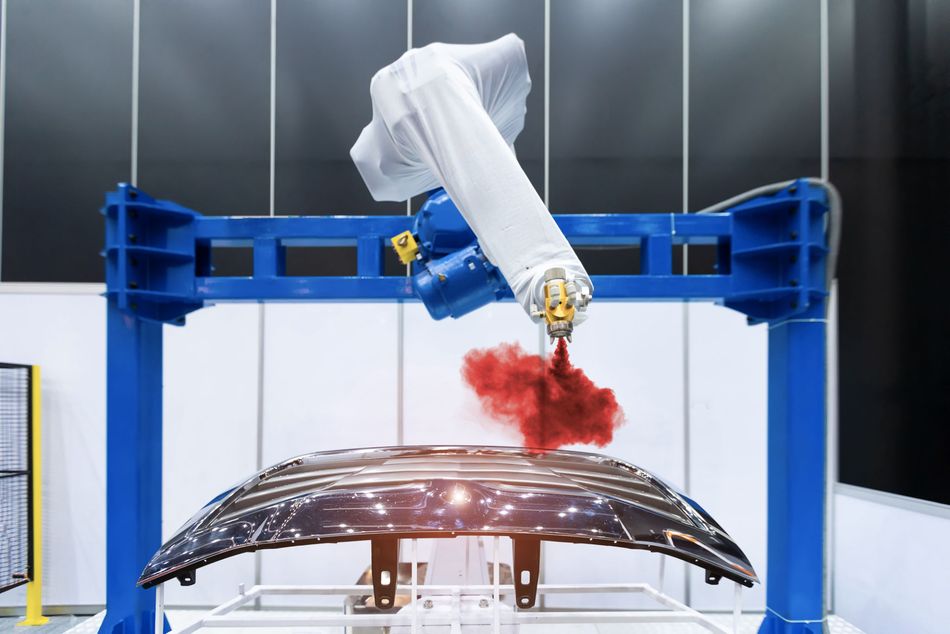
Classic examples include transfer lines in automotive engine assembly or dedicated assembly machines for a specific electronic component. These systems excel at efficiency when making the same item repeatedly, but they lack adaptability to new products.
Programmable Automation
In programmable automation, the production equipment can be reprogrammed to accommodate different product configurations or sequences. The machinery is general-purpose enough that by loading a new program (and perhaps changing some fixtures or tools), you can produce a different batch of products. This is used for batch production – making, say, a few hundred or thousand units of one product, then retooling for a different product. Compared to fixed automation, programmable systems have more flexibility but usually lower production rates. They still often require significant time to switch over (hours or days) for a new batch.
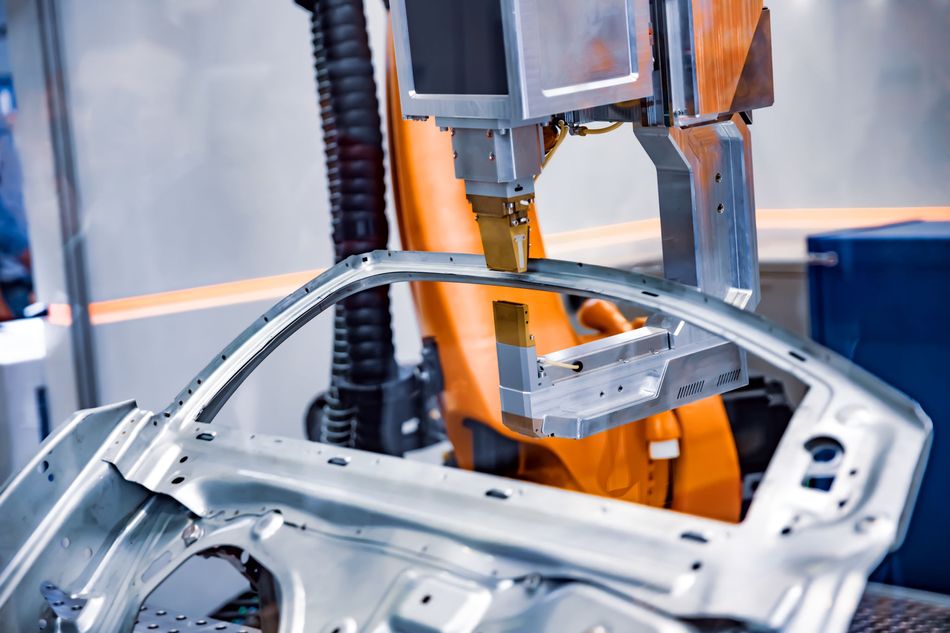
Examples include CNC machine tools and robots that can be reprogrammed, or assembly lines where operators can load new instructions via PLCs. Industrial robots and PLCs themselves are key examples of programmable automation components. [2] Manufacturers use this type when they need the ability to make multiple product types on the same line over time.
Flexible Automation (Soft Automation)
Flexible automation is the most adaptable form! It extends programmable automation by enabling almost instant changeovers between products. A flexible automated assembly line can produce multiple product variants back-to-back, without lengthy reprogramming downtime. These systems are usually controlled by complex software and often coordinated by a central computer or manufacturing execution system. Operators might simply select the product recipe via an HMI (Human-Machine Interface), and the equipment (robots, machines, etc.) automatically adjusts or retrieves the appropriate program. Flexible automation is ideal for lower-volume, high-mix production where many different products or models are made on the same line.
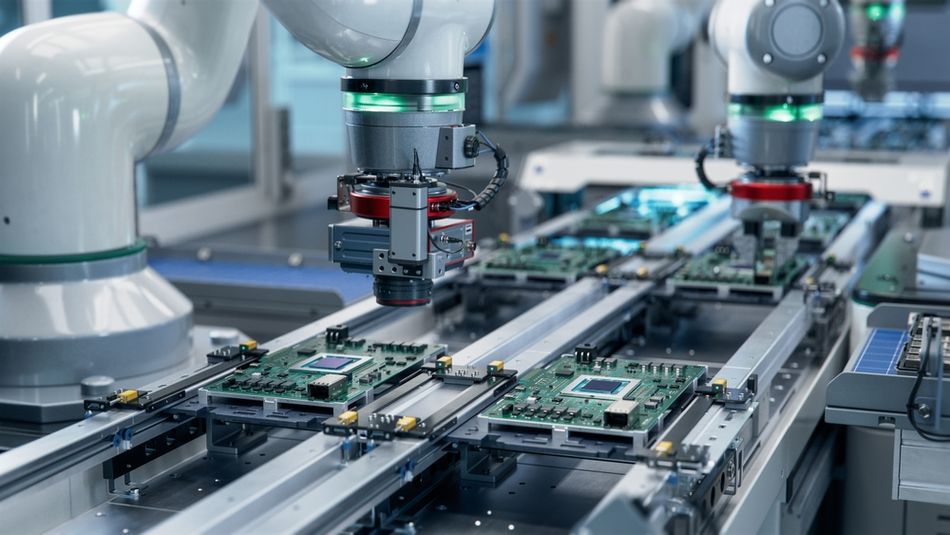
For example, an electronics assembly line might handle dozens of PCB variants in a day. The trade-off is, again, costly – flexible systems are sophisticated and expensive to design. They may also run at slightly lower speeds than fixed lines due to their generalized nature. Still, they provide immense agility for manufacturers serving dynamic markets.
In practice, many factories use a mix of these automation types! Some stations might be fixed (for a common task done the same way every time), while others are programmable or flexible to handle variation. Choosing the right type involves analyzing production volume, variability, and cost constraints.
Recommended Reading: What is Programmable Automation?
Key Components of Assembly Line Automation
To automate an assembly line, a combination of specialized hardware and software components is required. Here are the key components that make up an automated assembly system today:
Industrial Robots
Industrial robots are often the most visible element of assembly automation. These are programmable mechanical arms (or sometimes gantry-mounted systems) that can manipulate tools or workpieces. Robots are used for tasks such as welding, painting, picking and placing parts, screw driving, packaging, and more. In an automotive assembly line, for instance, robots weld car body panels together with speed and repeatable precision that far exceed human capability.
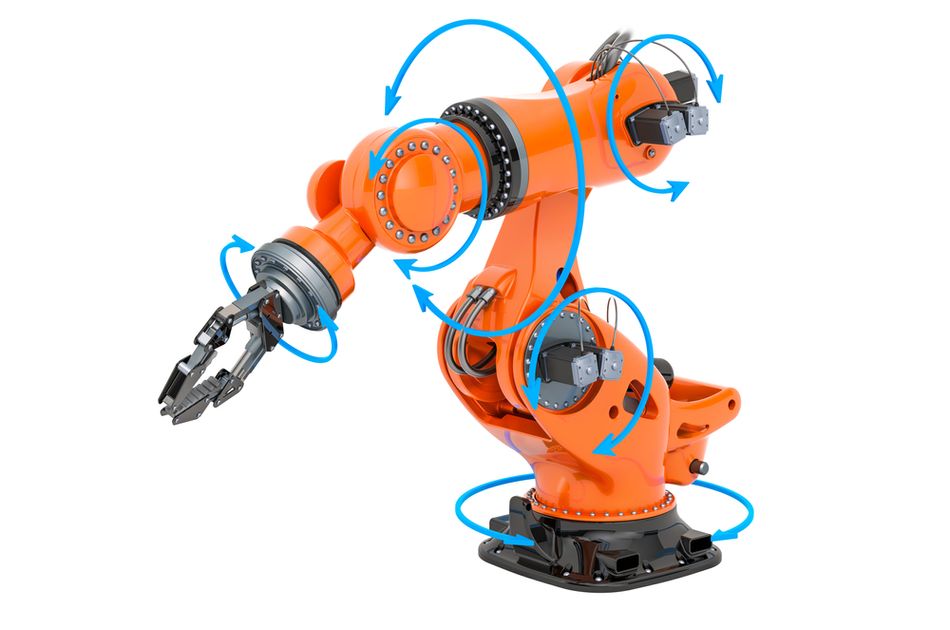
Modern industrial robots typically have multiple axes of motion (commonly 6-axis articulated arms) allowing a wide range of movement. [3] They are controlled by robotic controllers that execute programmed instructions (teach pendant programming or offline programming). Robots excel at repetitive, precise tasks and can work in hazardous environments (like paint booths or near furnaces). By using robots, manufacturers improve efficiency and ensure consistent quality while reducing human error. Many robots also have integrated sensors for feedback – for example, force sensors for delicate assembly or computer vision for part alignment.
Recommended Reading: What are Robotic Assembly Lines? History, Components, Advantages, Limitations, Applications, and Future
Programmable Logic Controllers (PLCs)
At the heart of most automated assembly lines is the Programmable Logic Controller (PLC). A PLC is an industrial hardened computer that continuously monitors input signals (from sensors, switches, etc.) and controls output actuators (motors, valves, lights) based on a custom program. PLCs are essentially the “brains” coordinating the sequence of operations on the line. They execute logic in real time, enabling different machines and robots to work in unison.

PLCs are designed to be extremely reliable and fast in industrial environments – they can operate non-stop and withstand electrical noise, heat, and vibration. The fundamental role of a PLC is to automate process control, replacing the need for manual switching or control by an operator. For example, a PLC in an assembly line might read a sensor that detects the presence of a part and then trigger a pneumatic cylinder to press the part into place, after which it signals a robot to perform a weld. All these steps are coordinated through the program of PLC (often written in ladder logic or structured text languages).
By linking sensors and actuators, PLCs ensure that each station on the assembly line performs its task at the right moment. They also handle safety interlocks (stopping the line if an anomaly is detected) and can communicate with higher-level systems (like a SCADA or MES) to report status. In summary, PLCs are the central control hubs that make real-time decisions, orchestrating the various devices on an automated line.
Recommended Reading: Difference between PLC and DCS: Decoding the Automation Divide
Sensors and Vision Systems
Sensors are the eyes and ears of an automated assembly line! They provide crucial feedback to the control system (PLCs or robot controllers) about what’s happening in the process. Common sensors in assembly automation include:
Proximity Sensors and Photoelectric Sensors: to detect the presence or position of components on the line. For instance, an optical sensor might verify a part is correctly seated in a fixture before the next operation.
Limit Switches: mechanical sensors triggered by machine movement, used to ensure an actuator (like a piston) has completed its stroke.
Encoders: attached to conveyor motors or robot joints to track positions and speeds, enabling precise motion control.
Pressure and Torque Sensors: to measure forces during assembly (useful for quality control, e.g. ensuring a screw is tightened to the correct torque).
Machine Vision Systems: specialized camera systems with image processing software. Vision systems can inspect parts for defects, check alignment, read barcodes or QR codes for traceability, and guide robots (vision-guided robotics). By automating inspection, machine vision improves quality control and reduces errors.
These sensors feed data into the PLCs and controllers, which then make decisions (like stopping the line if a part is missing, or rejecting a defective product). Vision Systems, in particular, have become powerful with advances in cameras and AI image recognition – they can often replace multiple manual inspectors and catch subtle defects.
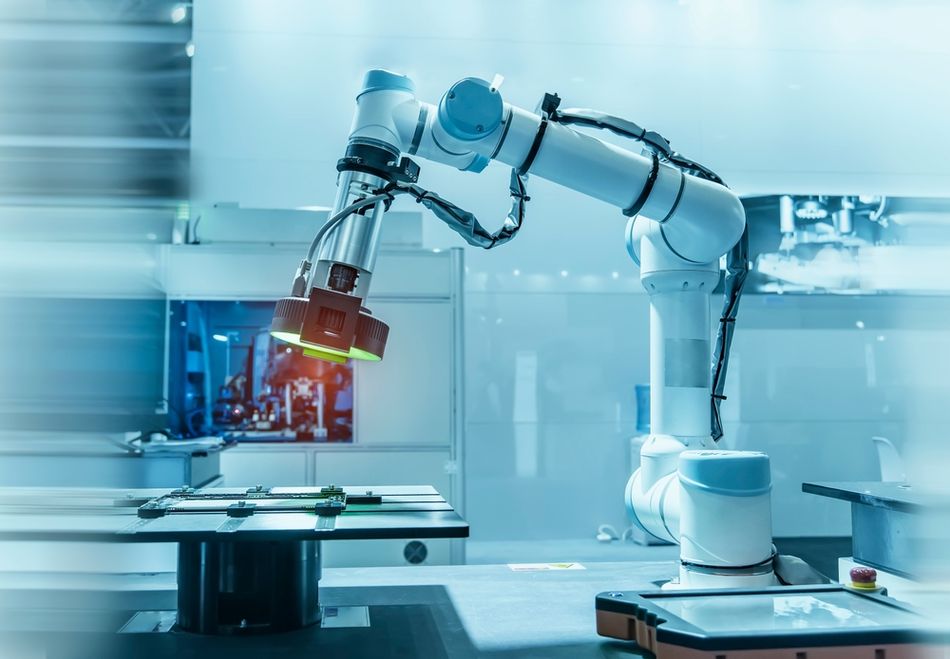
In essence, sensors and vision provide the feedback loop that makes automation “smart” and adaptable rather than just blindly moving parts around. They are critical for achieving high quality and for enabling advanced control strategies (like adaptive adjustments if a parameter drifts out of range).
Recommended Reading: Types of Sensors in Robotics
Conveyor Systems and Actuators
Moving products between stations on an assembly line requires conveyor systems and various actuators. Conveyors are the belts, chains, or rollers that transport components from one workstation to the next in a continuous or stepwise fashion. They serve as the backbone of the physical flow of an assembly line. Conveyors themselves often have motors controlled by Variable Frequency Drives (VFDs) or servo systems to index items at precise intervals matching the line takt time.

In automated lines, conveyors may be supplemented or replaced by other material transport solutions, such as Automated Guided Vehicles (AGVs) or Autonomous Mobile Robots (AMRs) that carry parts between stations without fixed tracks. [4] AGVs follow predefined paths (tapes, magnets, or laser guidance) to deliver components, which adds flexibility to factory layouts. They are essentially self-driving platforms that improve logistics in automation.
Aside from conveyors, numerous actuators perform the actual work on components at each station. These include: pneumatic or hydraulic cylinders that press, clamp or lift parts; electric motors and servo drives that rotate or position elements; robotic end-effectors like grippers or welding torches; and other specialized mechanisms (e.g., vibratory bowl feeders that sort and feed small parts automatically). Actuators execute the commands from the PLC/controls to manipulate parts and tools.
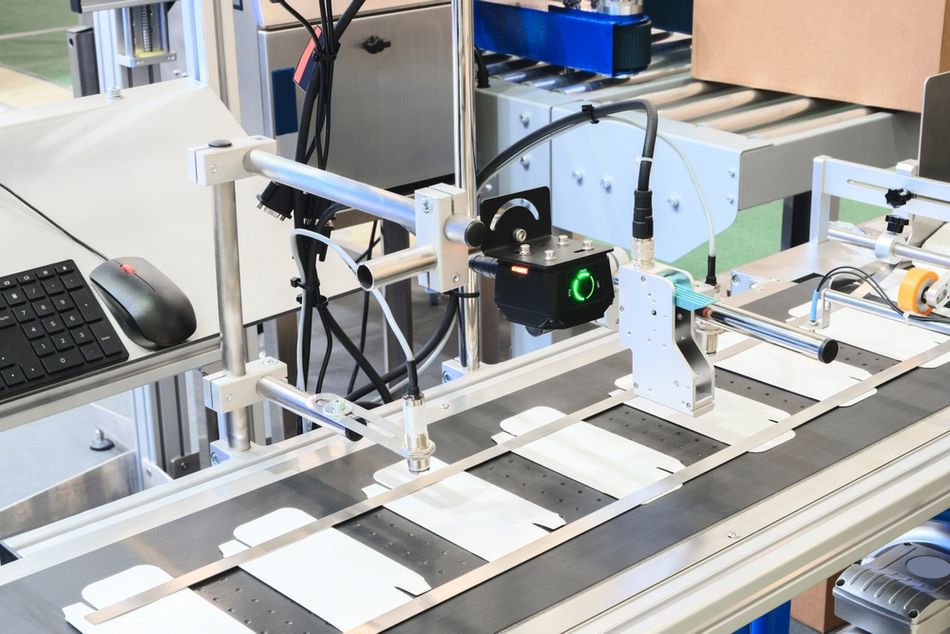
For example, a section of an automated line might work as follows: a conveyor brings a product pallet into a station and stops (actuated by a stopper cylinder), a robotic arm with a gripper picks up a component and places it on the product, another pneumatic cylinder advances to screw it in place, sensors confirm the task is done, and then the conveyor moves the pallet to the next station. This sequence relies on multiple actuators working in sync.
Integration of Components: The true power of assembly line automation comes from integrating all these components – robots, PLCs, sensors, conveyors, and actuators – into a cohesive system. Communication networks (like industrial Ethernet or Fieldbus systems) often link these components to coordinate actions. Design engineers must ensure that robots and machines are appropriately safeguarded (with light curtains or safety interlocks) and that the line is balanced so the cycle time of each station matches the overall flow.
In the next section, we will delve into the control systems and software considerations that tie these components together, as well as human-machine interfaces and other implementation aspects of assembly automation.
Recommended Reading: Material Handling Automation: A Comprehensive Guide for Engineers
Technological Aspects and Implementation Considerations
Designing and implementing an automated assembly line involves various technological considerations. Engineers must plan the control architecture, programming, human interfaces, and integration of new technologies like IoT. Additionally, practical challenges such as system integration and maintenance need to be addressed. Let’s explore these aspects:
Control Systems and PLC Programming
A robust control system is the foundation of assembly line automation! At the lowest level, as discussed, PLCs handle real-time control of machinery. Implementing an automated line requires developing the PLC programs (or ladder logic) that define the sequence of operations, interlocks, and safety conditions.
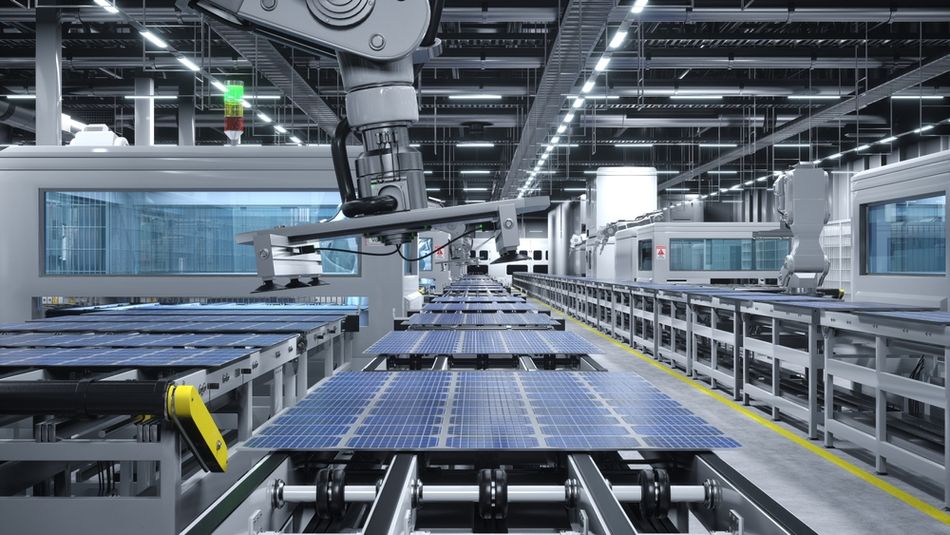
Control engineers break down the assembly process into logical steps and write code so that the line behaves in the correct order.
Key control considerations include:
Synchronization: ensuring timing between stations is aligned. PLCs often communicate with each other or with a central controller to synchronize actions. For instance, Station B must not proceed until Station A has finished a critical task and conveyed the part.
Real-Time Performance: PLCs scan inputs and update outputs on the order of milliseconds. This is crucial so that, for example, if a sensor detects a misfeed, the PLC can immediately stop a robot to prevent damage.
Programming Standards: Many assembly lines use standardized programming frameworks (like IEC 61131-3 for PLCs) to organize code into functions, making it easier to maintain. A well-structured program is vital for debugging and future modifications.
In advanced systems, PLCs may work alongside Industrial PCs or motion controllers for tasks requiring heavy computation (like complex vision processing or robotics kinematics). Additionally, SCADA (Supervisory Control and Data Acquisition) systems or Manufacturing Execution Systems (MES) can sit above PLCs to oversee the entire line, collect data, and send high-level commands (e.g., adjust the line speed, or switch product recipes).
PLCs and automation software effectively act as the nervous system of the line – coordinating all mechanical actions according to the digital “blueprint” of the process. Proper programming and rigorous testing (often through simulation or digital twins before deployment) are critical to ensure the line operates smoothly under all conditions (including error scenarios).
Recommended Reading: Types of Industrial Control Systems: Examples and Applications
Human-Machine Interaction (HMI) in Automation
Even in a fully automated assembly line, humans still play an important role – they just interact with the system at a higher level rather than doing manual assembly work. Human-Machine Interfaces (HMIs) are the touchpoints where operators, engineers, or maintenance technicians monitor and control the automated line. An HMI can be a simple control panel with buttons and indicator lights or a sophisticated touchscreen panel with graphical displays of the whole line.

Key aspects of HMI in assembly line automation include:
Monitoring and Visualization: HMIs display real-time data from the line, often through visual dashboards. An operator might see representations of each station, with indicators showing machine status (running, stopped, fault), counters of units produced, cycle time, etc. Alerts and alarms are also shown to notify if something goes wrong (e.g., a motor overload or a sensor fault). This helps the human supervisor maintain situational awareness. Modern HMIs can show trends, logs, and even visualizations from machine vision systems for quality control.
Control and Input: Authorized personnel can use the HMI to issue commands, such as starting or stopping the line, selecting the product type to run, adjusting speeds, or initiating maintenance modes. For safety, HMIs include emergency stop functions and may require login for critical operations. In flexible automation, changing over to a different product might be as simple as choosing a new recipe on the HMI screen, which loads the corresponding PLC program or robot routine.
Diagnostics and Maintenance: When the automated line has an issue, the HMI helps engineers diagnose it. Error messages, diagnostic pages, and sometimes step-by-step troubleshooting guides can be accessible. Some systems have wearable HMIs or tablets that maintenance staff can carry to the exact location of a problem with real-time sensor readouts.
Effective HMI design is crucial – it needs to be intuitive and informative without overwhelming the user. A well-designed HMI significantly reduces downtime by enabling quicker understanding and resolution of issues. It also improves safety by clearly displaying warnings and guiding the safe operation of the line.
Recommended Reading: HMI Technologies: The Ultimate Guide to Human-Machine Interface Innovations
Integration of IoT and Industry 4.0 Technologies
In the era of Industry 4.0, assembly lines are becoming highly connected and data-driven. The Industrial Internet of Things (IIoT) refers to connecting machines, sensors, and control systems in the factory to the internet or enterprise networks for advanced monitoring and control. How does IoT integration benefit assembly line automation?
Real-Time Data Collection: Sensors across the assembly line can stream data (temperatures, motor currents, cycle times, counts, etc.) into cloud databases or centralized analytics platforms. By analyzing this data, manufacturers gain insights into bottlenecks or inefficiencies. For example, IoT data might reveal that one station is slower than others, causing minor backups, which can then be addressed by optimization. Data can also feed OEE (Overall Equipment Effectiveness) calculations to measure productivity.
Predictive Maintenance: Perhaps one of the biggest advantages of IoT in automation is enabling predictive maintenance. By continuously monitoring machine health indicators (vibrations, heat, etc.) and using AI algorithms, the system can predict when a component is likely to fail and schedule maintenance before a breakdown occurs. Digital twins play a role here by simulating and predicting wear and tear. This minimizes unexpected downtime – critical, since downtime in a fast assembly line can be extremely costly (in automotive manufacturing, a minute of downtime can cost upwards of hundreds of thousands of dollars).
Cloud and MES Integration: IoT connectivity allows the assembly line to be integrated with broader enterprise systems. For instance, production data from the line can automatically update inventory counts or trigger restocking of parts. Managers can remotely monitor production status from a dashboard, even across multiple factory sites. Work orders from an MES might directly instruct the line on how many units of each model to produce in a shift, achieving a tightly coupled smart factory operation.
Adaptive Control with AI: With IoT bringing large datasets and connectivity, some advanced assembly lines use AI and machine learning to adapt on the fly. For example, an AI algorithm might adjust robot motion parameters to reduce vibration if it senses a slight misalignment, or dynamically balance the line speeds if one station falls behind. While still an emerging area, such self-optimizing systems are the frontier of assembly automation.
Implementing IoT and Industry 4.0 features requires robust network infrastructure on the factory floor (industrial Ethernet, Wi-Fi or 5G for wireless sensors, etc.) and careful cybersecurity measures.
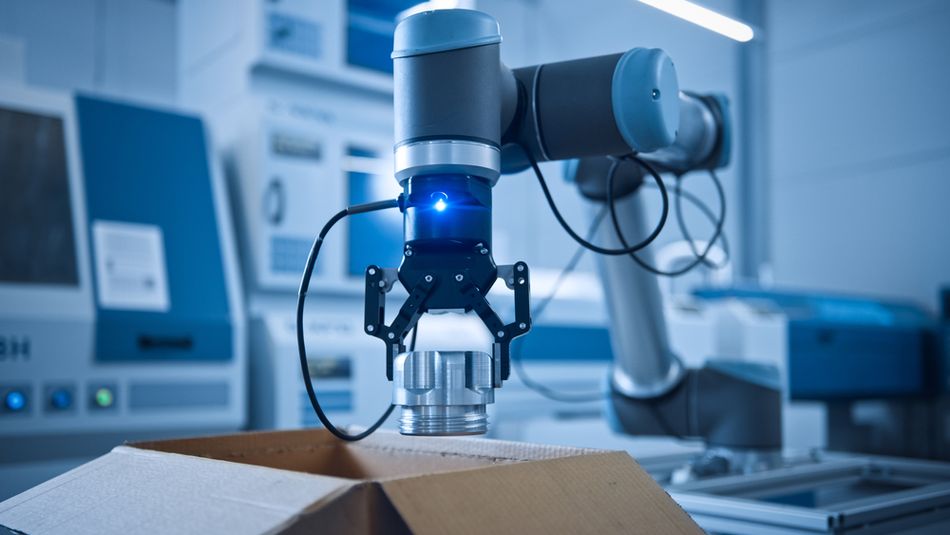
Engineers need to ensure that connecting machines don’t expose them to unauthorized access or data breaches. Despite these challenges, the trend is clearly towards more connectivity – making assembly lines a part of the larger digital ecosystem of manufacturing.
Recommended Reading: The Engineer's Guide to Industrial IoT and Industry 4.0
Challenges and Best Practices in Automation Implementation
Deploying assembly line automation is a complex endeavour! There are several challenges engineers and organizations face, and corresponding best practices to mitigate them:
System Integration
One primary challenge is integrating new automated equipment with existing systems and processes. In many factories, you have legacy machines that were not originally designed to be automated or networked. Compatibility issues can arise when trying to make a new robotic cell “talk” to an old conveyor system.
Best Practice: Conduct a thorough systems integration plan! Use standardized communication protocols (like OPC UA, Ethernet/IP, etc.) and possibly employ middleware or IoT gateways to bridge old and new systems. Engaging experienced systems integrators can ensure smooth interfacing of all components.
High Initial Costs
Automation often requires a large up-front investment – robots, PLCs, safety equipment, and engineering hours are not cheap. The ROI (return on investment) might take time, which can be a hurdle for management.
Best Practice: Start with a cost-benefit analysis! Identify the most labor-intensive or error-prone parts of the line and automate those first (phased implementation). Often a pilot project can demonstrate quick wins (like a particular workstation doubling throughput when automated), which justifies further investment. Consider financing options or incremental automation (semi-automation as a step toward full automation).
Workforce Adaptation
Introducing automation changes the roles workers play. There can be resistance or a skills gap – assembling by hand is a different skill set than programming a robot or maintaining a PLC.
Best Practice: Invest in training and change management! Upskill the existing workforce to manage and oversee automated systems. When operators understand the technology and are trained to use the HMI or respond to robot faults, they become allies of automation rather than seeing it as a threat. Emphasize that automation often shifts jobs towards supervision and technical maintenance, which are valuable skills.
Ensuring Reliability
An automated line has many moving parts and software – things can and will go wrong (sensors fail, robots error out, etc.). Unlike a manual line where humans can improvise, a machine will just stop.
Best Practice: Design for reliability and maintainability! This includes selecting proven, high-quality components, building redundancy for critical sensors or having manual fallback modes, and establishing a preventive maintenance schedule. Monitoring via IoT (predictive maintenance) as mentioned can greatly help reliability by fixing issues proactively. Also, simulate and test the system thoroughly before commissioning to catch potential failure modes. Many companies use a digital twin model of the assembly line to test control logic under various scenarios before actual deployment, reducing teething issues.
Safety and Compliance
Automated systems can pose safety hazards (moving robots or conveyors can injure personnel if not properly safeguarded). There are strict safety standards (like ISO 10218 for robot safety or OSHA regulations) that must be followed. [5]
Best Practice: Implement comprehensive safety measures – physical guarding, light curtains, emergency stops, safety PLCs that monitor all safety devices, and collaborative robots or cobots in appropriate applications (more on cobots shortly). Train staff on safety procedures around automation. Also, ensure compliance with any industry-specific standards (for example, in food/pharmaceutical manufacturing, automation equipment might need to meet hygiene and traceability requirements).
By addressing these challenges with careful planning, engineering rigor, and worker involvement, manufacturers can successfully implement assembly line automation with minimal disruption and maximum benefit. It’s often said that automation is a journey, not a one-time project – continuous improvement after initial deployment is key. Over time, tweaks and upgrades are made to optimize the automated line, and it becomes a core part of the production strategy.
Recommended Reading: Driving Industrial Automation Forward with SBCs
Conclusion
Assembly line automation has revolutionized manufacturing, enabling faster, more efficient, and higher-quality production. From Ford’s early moving assembly lines to today’s AI-driven smart factories, automation continues to evolve. Key components like robots, PLCs, and IoT systems work together to optimize processes, while challenges like system integration and maintenance require careful planning. The future promises self-optimizing AI, collaborative robots, and digital twins to enhance efficiency and sustainability. Automation doesn't replace humans—it empowers engineers to design and refine advanced systems. Staying updated on these trends is crucial for shaping the future of manufacturing in an increasingly digital world.
Frequently Asked Questions (FAQs)
Q: What is assembly line automation?
A: Assembly line automation is the use of automation technology to perform specific tasks in a production process with minimal manual labor. It involves robotic automation, PLC-controlled conveyor belts, and robotic arms to enhance efficiency. Industries use automation for cost-effective manufacturing, reducing errors and improving product quality and consistency.
Q: What are the benefits of assembly line automation?
A: Automation increases productivity, improves quality, reduces costs, and enhances worker safety by handling dangerous tasks. It also enables real-time monitoring, ensuring better process control and data-driven decision-making. While the initial investment is high, long-term savings in labour and material waste make automation a key driver of industrial efficiency.
Q: What are the different types of assembly line automation?
A: There are three broad types:
Fixed Automation specializes in high-volume, repetitive tasks.
Programmable Automation allows flexibility for batch production with reprogramming.
Flexible Automation dynamically adapts to product changes without downtime.
Each type suits different manufacturing needs, from mass production to high-mix, low-volume scenarios, balancing efficiency, adaptability, and cost considerations in automated manufacturing.
Q: What components are essential in an automated assembly line?
A: Essential components include robotic arms for specific tasks, PLCs for real-time control, conveyor belts for material handling, and automation technology for efficiency. Robotic automation improves product quality, while sensors monitor raw materials and production conditions, ensuring cost-effective operation across various industries.
Q: What are collaborative robots (cobots) and how are they used in assembly lines?
A: Robotic automation includes cobots, designed for safe collaboration with human workers. Cobots assist in specific tasks like assembling plastics or handling raw materials, reducing manual labor. They integrate with PLCs and conveyor belts, enhancing product design, boosting production systems, and improving product quality efficiently in various industries.
References
[1] Ford. The Moving Assembly Line and the Five-Dollar Workday [Cited 2025 March 11] Available at: Link
[2] Wevolver. Industrial Process Automation: The Future of Manufacturing [Cited 2025 March 11] Available at: Link
[3] Wevolver. What is a Six Axis Robot: Exploring the Versatile Powerhouse of Industrial Automation [Cited 2025 March 11] Available at: Link
[4] MDPI. Application of Technological Procedure Automated Guided Vehicles in the Production Hall of a Company Due to Increasing the Automation [Cited 2025 March 11] Available at: Link
[5] ISO. ISO 10218-1:2011 [Cited 2025 March 11] Available at: Link
Table of Contents
IntroductionUnderstanding Assembly Line AutomationDefinition and Historical EvolutionBenefits of Automation in Assembly LinesTypes of Assembly Line AutomationKey Components of Assembly Line AutomationIndustrial RobotsProgrammable Logic Controllers (PLCs)Sensors and Vision SystemsConveyor Systems and ActuatorsTechnological Aspects and Implementation ConsiderationsControl Systems and PLC ProgrammingHuman-Machine Interaction (HMI) in AutomationIntegration of IoT and Industry 4.0 TechnologiesChallenges and Best Practices in Automation ImplementationConclusionFrequently Asked Questions (FAQs)References